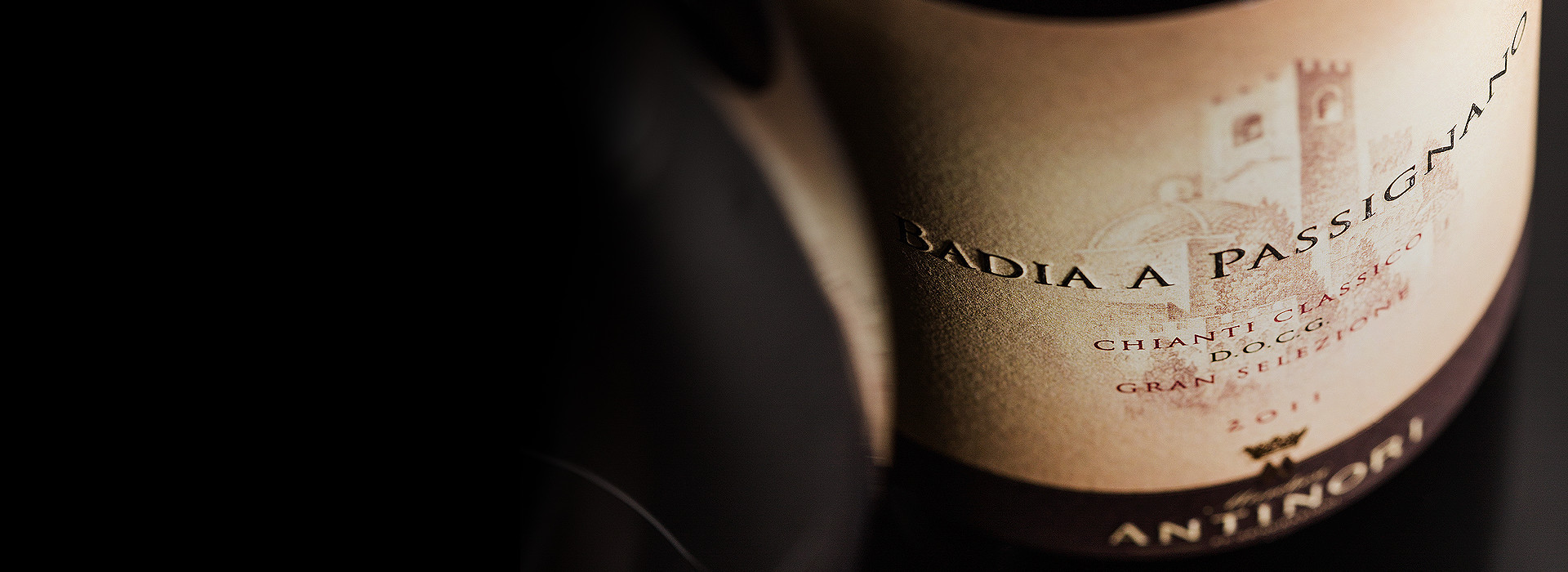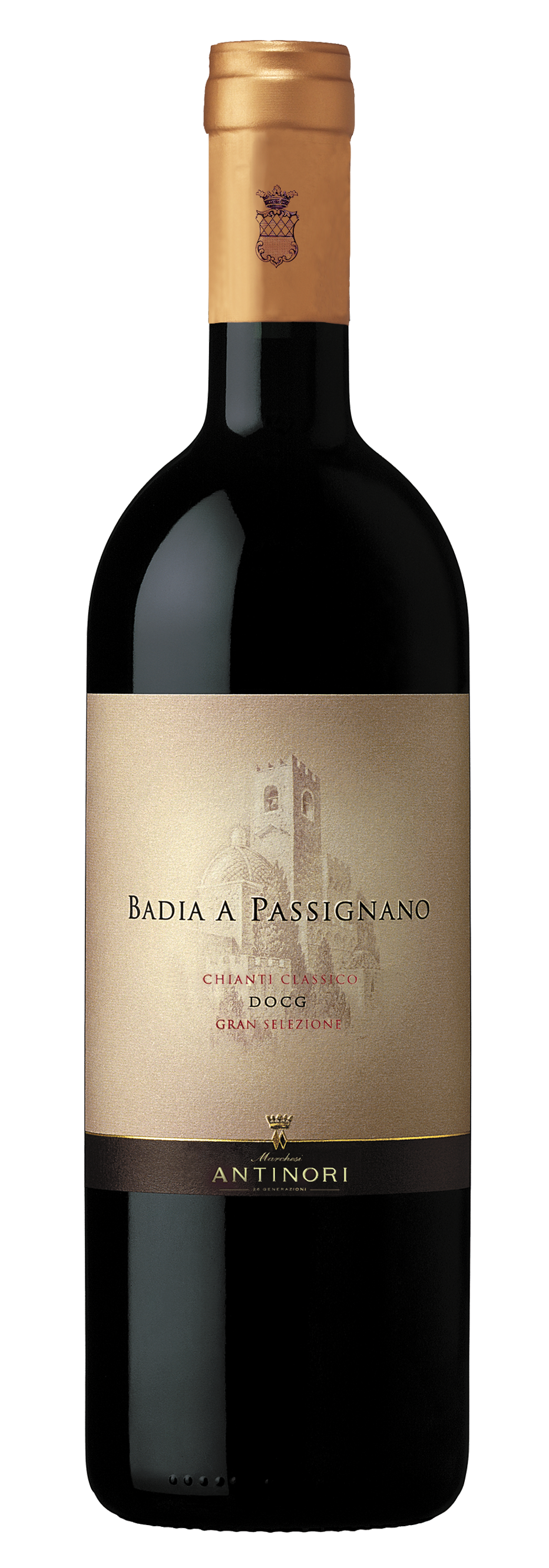Tasting Notes

Climate
Autumn of 2009 and the following winter of 2010 were characterized by rain and low temperatures. Snow fell towards the end of 2009 and continued at intervals until mid-March. The weather assured an excellent period of repose for the vines which, together with the abundant precipitations of early spring, significantly delayed bud burst compared to the normal seasonal period. The months of April, May, and June, of crucial importance for vine growth and development, were characterized by high rainfall and lower than average temperatures, leading to a delay in the vine cycle which involved all grape varieties. The summer, warm in temperature and dry in climate, contributed to an excellent development of the grape bunches and a significant recovery of lost time in vine growth. Climatic conditions changed once again towards the end of July and during the first half of August with the arrival of rather low temperatures for the season and light rainfall which, together, slowed the color change of the grapes. September alternated warm, sunny, and breezy days with occasional rain which, fortunately, was regularly followed by north winds which rapidly dried the grapes and adjusted the micro-climate of the vineyards. Cool nights and warm daytime temperatures led to an optimal physiological ripening of the Sangiovese grapes, and picking, which began towards the end of September, was concluded around the 10th of October.
Vinification
The unusual climatic conditions of the vintage made a careful process of selection in every phase of the production process an indispensable necessity. Upon their arrival at the cellars, the grapes, after a delicate destemming, were manually selected on the sorting table to guarantee a product of the highest quality. This operation was of fundamental important in realizing the full potential of the crop during the elaboration of the musts. The fermentation lasted ten days and, after finishing their sugars, the grapes remained on their skins for an additional ten to twelve days. After being run off its skins, the wine went into Hungarian, and partly French, oak barrels where it went through a complete malolactic fermentation by the end of the year. After racking, the various lots, still kept separate on the basis of the various vineyard parcels of origin, were aged for fourteen months in 60 and 80 gallon Hungarian, and, again, partly French, oak barrels. During this phase, the various lots were constantly tasted and controlled in order to maximize the benefits of the aging process. The lots were then blended together and bottled at the end of the aging period. A further twelve month period of bottle aging concluded the winemaking process.
Historical data
Badia a Passignano Gran Selezione is produced exclusively from the finest Sangiovese grapes harvested from its namesake vineyard located in the heart of the Chianti Classico region. The region has been respected and appreciated for its outstanding wine production since the year 1000. The vineyards grow at an altitude of approximately 300 meters (984 feet) above sea level on soils rich in limestone with a fair amount of clay. The wine is aged in the historic cellars under the Badia (abbey) of Passignano that dates back to the 10th century.
Tasting Notes
An intense ruby red in color, the wine shows aromas of ripe fruit, at times of maximum ripeness, but with a total respect for the grape variety and an excellently maintained freshness. The notes of the fruit and of the oak fuse in harmonious balance with minty balsamic notes and suggestions of graphite. The rich palate, with supple and balanced tannins, is vibrant and fully expressive of Sangiovese. The length, persistence, and aftertaste are of notable importance and echo the fruit first felt on the nose.
Awards
Antonio Galloni 93/100 USA James Suckling 93/100 USA Wine Advocate USA 92+/100 Wine Enthusiast 94/100 USA Wine Spectator 92/100 USA

Climate
Autumn of 2009 and the following winter of 2010 were characterized by rain and low temperatures. Snow fell towards the end of 2009 and continued at intervals until mid-March. The weather assured an excellent period of repose for the vines which, together with the abundant precipitations of early spring, significantly delayed bud burst compared to the normal seasonal period. The months of April, May, and June, of crucial importance for vine growth and development, were characterized by high rainfall and lower than average temperatures, leading to a delay in the vine cycle which involved all grape varieties. The summer, warm in temperature and dry in climate, contributed to an excellent development of the grape bunches and a significant recovery of lost time in vine growth. Climatic conditions changed once again towards the end of July and during the first half of August with the arrival of rather low temperatures for the season and light rainfall which, together, slowed the color change of the grapes. September alternated warm, sunny, and breezy days with occasional rain which, fortunately, was regularly followed by north winds which rapidly dried the grapes and adjusted the micro-climate of the vineyards. Cool nights and warm daytime temperatures led to an optimal physiological ripening of the Sangiovese grapes, and picking, which began towards the end of September, was concluded around the 10th of October.

The History
Back in 1928, Niccolò Antinori decided to christen this wine Villa Antinori, in honor of the family’s eponymous villa; it was a reflection of his own personal interpretation of Chianti Classico’s and Tuscany’s unique identity.
The Style
Villa Antinori was first crafted in 1928 by Marchese Niccolò Antinori, Piero Antinori’s father, as the Antinori family’s signature wine; an exceptional wine that can represent the family’s history, identity and continuity like no other. “Villa Antinori is a full-blooded Tuscan red […] which grapes are grown, mature and are harvested from our Tuscan estates and then fermented and aged in the Antinori family estates.” Piero Antinori.
The design
The label’s design represents our concept of home, our territory and Tuscany. “The French have châteaux, but we have Villas!” Niccolò Antinori cheerfully explained his choice for the illustration on the front label, an innovative design that broke with more traditional packaging conventions of that time.
In Honor of the Monaldeschi della Cervara Family
The wine’s name honors the Monaldeschi della Cervara family who was the historic owner of Castello della Sala in the XVI century.
An old railway station
The Vignaferrovia vineyard takes its name from a characteristic old nineteenth century railway station still located a short distance from the vines.
Grown in an area with Great Potential
Poggio alle Nane comes from a winegrowing area well known for its production of high quality wines, an area in which both Cabernet and Carménère best express their characteristics.
A red amidst whites
At Castello della Sala, an area historically important for white wines, Pinot Nero offers an authentic and typical expression of its variety with a strong territorial character.
An ancient grape variety
Aleatico, an old and traditional Tuscan grape variety grown since Etruscan times, is able to give a modern expression of itself in this unique territory.
Villa del Cigliano
Villa del Cigliano, located in the gently rolling hillsides of San Casciano Val di Pesa, in the province of Florence, has always been a symbol of strong family relationships; the villa has watched over the lives of generations of Antinori family members since 1546, the year Alessandro di Niccolò Antinori became the owner of the property.
The Design
The label was designed by Silvio Coppola in 1974 for the release of Tignanello 1971. The idea to commission this artist was discussed at an event at Castello della Sala in 1973. Silvio Coppola was an important Italian graphic and interior designer who was famous for his minimalist lighting fixtures and austere furniture but also for book cover designs for Italian publishing company Feltrinelli. Silvio Coppola was the perfect match for the job.
The Bolgheri Amphitheater
The Guado al Tasso estate’s most characteristic geographic feature is the Bolgheri Amphitheater, a beautiful plain encircled by rolling hillsides that faces the Tyrrhenian Sea. The shape of the territory creates a unique microclimate with beneficial temperature fluctuations. The estate’s vineyards are located at the foot of the amphitheater, an optimal position as cold nocturnal breezes cool down the vines. These particular climatic conditions give the grapes pronounced aromas and guarantee a perfect ripening of the berries.
The Barrique
Cervaro della Sala was one of the first Italian white wines to have malolactic fermentation and aging take place in barriques.
The Name
Poggio alle Nane’s name comes from the area where its vines grow. Duck breeding farms once existed and the name “Nane” is local dialect for duck. The vineyards extend from the hillside to the lake that are still part of the property.
Rocky soils
The Vignaferrovia vineyard grows on rocky, gravelly soils, a condition that naturally limits the grapevine’s growth rate and enhances the quality of the berries.
Winding vineyards
The 4 hectares (10 acres) of Pinot Nero grow along the hillsides shaping the landscape into a series of sinuous terraced vineyards.
A single letter symbol
“A” represents in one single letter the combination of the estate’s initials, Fattoria Aldobrandesca, and the grape’s variety, Aleatico.
The Signature
Marchese Piero Antinori, the current Honorary President, decided to have his father, Niccolò Antinori, sign the label as a sign of recognition for his father’s confidence in him.
Te Duce Proficio
Guado al Tasso added the Antinori family’s historic family crest on the capsules.
The Concept
The idea behind Cervaro della Sala was to craft a white wine able to age over time.
Sea breezes
Southwestern vineyard exposure allows sea breezes to mitigate hot summer temperatures and limit heat spikes.
Understanding nature
The particularly hot climate of Castello della Sala has forced agronomists to invent new ways to protect the grapes from the hot summer sun. The vines’ shoots are allowed to grow in length and are then folded over the plant so its leaves can shade the Pinot Nero grape clusters.
A Pursuit for Balance
“A” was crafted following the family’s pursuit for exceptional balance between Aleatico’s pronounced character and the unique qualities of the estate’s volcanic soils.
Te Duce Proficio
The historic family crest of the Antinori family
A Tribute to the Della Gherardesca Family
Guado al Tasso designed a label with the Della Gherardesca family crest and the initials DG as a tribute to the former estate owners.
The Enologist
In 1985, Renzo Cotarella, who was chief enologist at Castello della Sala at that time, made the first vintage of Cervaro della Sala.
A personal interpretation
The Antinori family wanted to give their own deeply personal interpretation of the historic wine, Brunello di Montalcino.
The Sun
Tignanello’s stylized “Sun” by Silvio Coppola


















